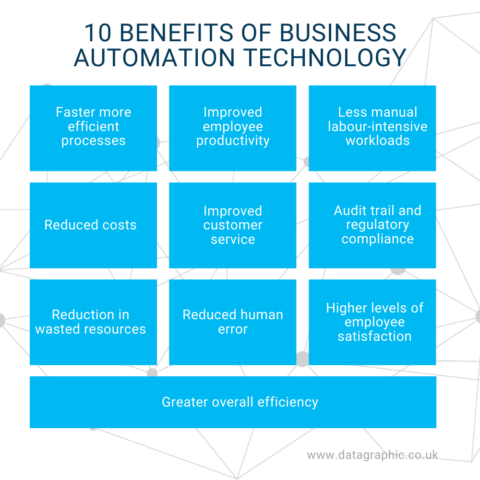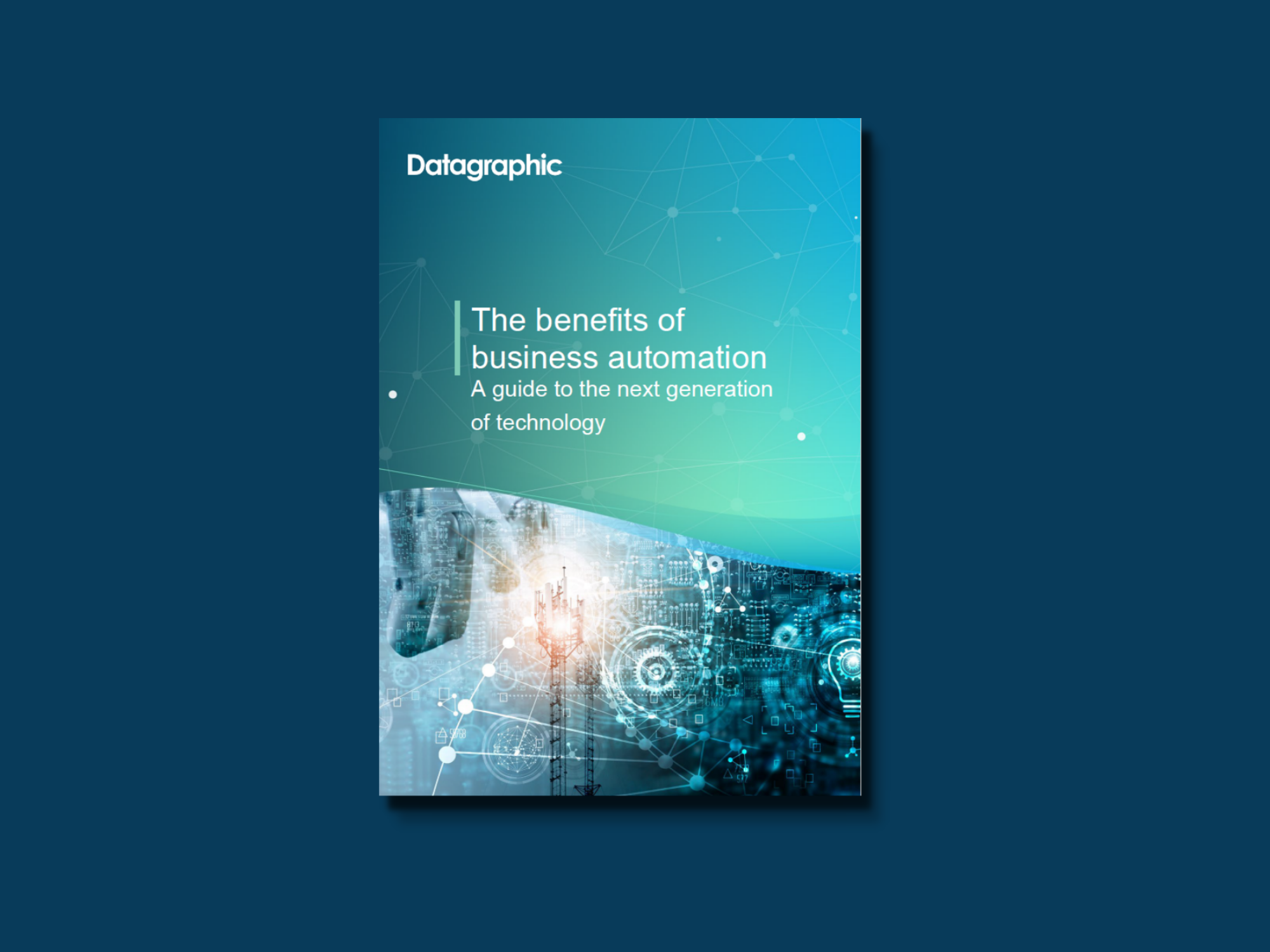The COVID-19 pandemic has forced even the slowest adapting industries to consider their digital evolution and look at business automation benefits.
Many organisations in recent years have had to fast track some level of digital transformation to keep pace with unrecognisable operating conditions.
For this reason, technology has become an integral facet of our lives, professionally and personally.
More demanding consumers
As consumers, we expect more from the organisations we interact with.
Our modern lifestyles and daily reliance on technology have exacerbated higher expectations for service delivery and speed. No longer will we wait days or weeks for a response to a service query or to receive the information we need.
To keep up, organisations have woken up to the reality that digital transformation is critical and that business automation is here to stay.

The automation revolution
Forward-thinking organisations recognise that automation technology can perform tasks faster and more efficiently.
‘Robots’ and vast computing power can make enormous cost savings, reorganise manual processes and provide valuable insights.
In fact, virtually every department or business function has the potential to evolve in ways that might have once never seemed possible.
That said, according to research by The Economist, less than half of UK businesses use technology to automate processes extensively. This means that the remaining 52% are still yet to feel the benefits that automation can provide.
Benefits of business automation

In this article, we share 10 ways in which automation can benefit outbound mail processing.
We look at how automation technology can apply to many business areas. But, in our experience, many organisations still prepare and send out documents manually. And yet, this process is very straightforward to automate with many immediate benefits, as shown here.
1. Faster, more efficient processes
Manual document production and distribution tasks are time-consuming. With the correct set-up, automation technology can perform the same processes more efficiently. You save time, resources and the associated human input needs, e.g. breaks, holidays, and physical space required.
2. Improved employee productivity
More efficient outbound mail processes mean minimal job role disruptions: giving employees time to focus on higher-value tasks. A study by Forrester Consulting demonstrated that automation speeds up decision making time and frees up employees to focus on more meaningful tasks, for example, improving customer service delivery.
3. Less manual labour-intensive workloads
By evolving the nature of job roles, the workload can shift away from manual labour. You can then invest in developing your team to be a more agile and higher-skilled workforce.
4. Reduced costs
Simple repetitive tasks – such as collating the contents of a mailing pack – can be vastly sped up through automation. But, it’s not just processing time that you can save. There are benefits to the cost of service delivery too.

Example: Business automation of outbound mail
Consider the resources required to manually produce and distribute your customer, employee or supplier communications.
You need the right amount of stationery, people and equipment in place – even though the number of documents you process probably fluctuates. By introducing a secure multichannel communication platform, like Aceni or an employee communications portal like Epay, your core team can process any amount of documents during their normal working hours.
They create the documents, and Aceni or Epay deliver the digital output or physical print. There’s no stock holding, capital expenditure or maintenance of printing and mailing equipment, no extra staffing costs at peak periods and lower postage costs!
5. Improved customer service
Your teams can provide more efficient service delivery and a better customer experience by automating outbound mail processes. Communications that may take weeks to prepare and mail internally can be distributed the same day with automation technology and the right service delivery partner.
6. A better audit trail and regulatory compliance
Automating document processes means extra tracking, checks and controls at different stages to improve compliance and data security. Your quality controls can be performed at any time without the need for human intervention. This can enhance your audit trails and compliance should they be needed.
7. Reduction in wasted resources
Traditionally, in organisations with fluctuating outbound mail volumes, extra resources are needed to cope with peaks in demand. Automation technology can be scaled up or down as necessary, which means that it can adapt to your needs without adding to your capital and resource costs.
8. Reduced human error
Mistakes can easily happen with high workloads, manual processes and time pressures. By removing tasks that are prone to error, you can mitigate the risk of potentially damaging consequences. Especially when handling sensitive, personal or financial data.
9. Higher levels of employee satisfaction
With the removal of monotonous, repetitive document processing tasks, the roles that employees play can evolve. They can focus their time on higher-value work. This can benefit the organisation. For example, by investing in training and employee development, the workforce is up-skilled and feels valued, increasing employee satisfaction and loyalty.
And finally…
10. Overall greater efficiency
By taking all of these things into account, automation can align with strategic objectives to improve processes and people’s overall productivity and efficiency.

Business automation guide
If you’re at the start of your automation journey and would like to understand further business automation technology and how it might impact your organisation, download our free guide – The benefits of business automation: a guide to the next generation of technology.
In the guide, we discuss the types of automation available, share real-life success stories, look at how you can use automation tools for competitive advantage, and assess the available options. Plus, our automation expert predicts trends in the future of automation to help you get ahead of the curve.
Download the guide here, or if you’d like to speak to one of our document automation experts, please get in touch.


